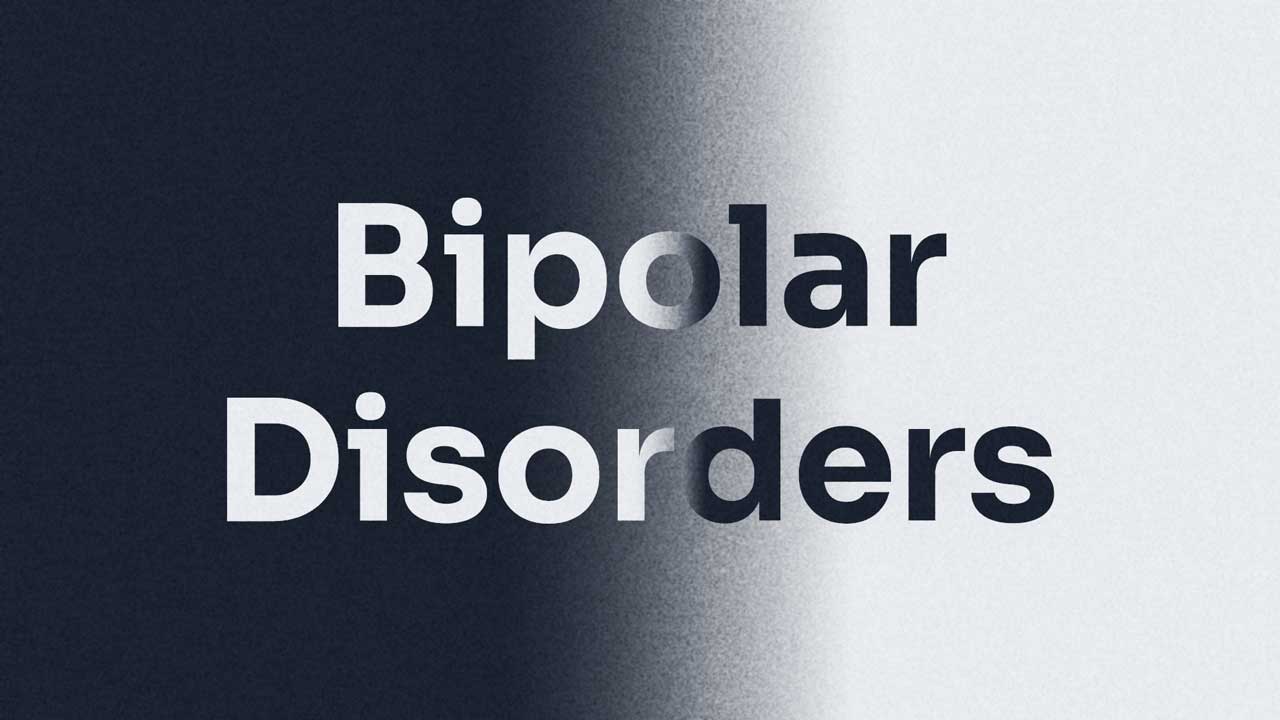An estimated 1 in 50 Australians experience a bipolar disorder each year (Healthdirect 2022).
The exact causes of bipolar disorders are not yet clear. However, there is evidence to suggest they are linked to a combination of genetic, neurological, biological, and environmental factors (SANE 2022).
What are Bipolar Disorders?
According to the American Psychiatric Association (2024), bipolar disorders are defined as ‘mental health conditions characterised by periodic, intense emotional states affecting a person's mood, energy and ability to function’.
People with bipolar disorders experience periods of mania/hypomania and depression.
During mania, feelings of excitement, overactivity, delusions and euphoria will be present. In depressive periods, a person will feel sad and hopeless (Truschel 2020).
The term ‘bipolar’ reflects the nature of the condition: a fluctuation between extreme highs and lows. These emotional states may occur at distinct times or periods (Truschel 2020; APA 2024).
People with bipolar disorders will have periods of regular moods as well. Treatments are available, and individuals with these conditions can still lead full and productive lives (APA 2024).

Types of Bipolar Disorders
Bipolar I Disorder
- A manic-depressive disorder
- It can exist both with and without psychotic episodes.
(Truschel 2020)
Bipolar II Disorder
- Consists of both depressive and hypomanic episodes, which will:
- Alternate between states
- Are typically less severe
- Generally, will not inhibit a person’s ability to function.
- It is not unusual for people who have bipolar II disorder to have co-occurring mental health conditions such as an anxiety disorder
- People commonly return to normal functioning between episodes.
(Truschel 2020; APA 2024)
Cyclothymic Disorder
- Is milder, consisting of mood swings
- Cyclical
- Causes brief but frequently occurring episodes of hypomania and depression.
(Truschel 2020; APA 2024)
As per the DSM-5, there are seven possible diagnoses for adult bipolar disorder:
- Bipolar I disorder
- Bipolar II disorder
- Cyclothymic disorder
- Substance/medication-induced bipolar and related disorder
- Bipolar and related disorder due to another medical condition
- Other specified bipolar and related disorder
- Unspecified bipolar and related disorder
(Purse 2022)
Bipolar Disorder DSM-5 Diagnostic Criteria
The first step to diagnosing a bipolar disorder is to seek the opinion of a mental health professional.
Manic Period
A manic period is defined as an elevated, expansive or irritable mood alongside increased activity and energy that lasts for at least one week and is present for most of the day, nearly every day (Black Dog Institute 2022).
Mania will be severe enough to disrupt work, family life, social life and daily responsibilities (APA 2024).
During mania, three or more of the following symptoms must be present:
- Decreased need for sleep
- Increased talkativeness
- Having racing thoughts
- Being very easily distracted
- Increased activity
- Increase in risky or impulsive behaviours.
(APA 2024)
Hypomanic Period
A hypomanic period is quite similar to a manic period. However, the symptoms will be less severe. Symptoms only need to last four days in a row to be considered a hypomanic episode (APA 2024).
Hypomanic symptoms do not lead to the major problems that mania is associated with. Generally, a person will still be able to function (APA 2024).
Major Depressive Period

A major depressive period is a period of two weeks in which a person presents at least five of the following symptoms. This must include at least one of the first two symptoms in the list:
- Severe sadness or despair
- A loss of interest or pleasure in activities
- Feelings of guilt or worthlessness
- Fatigue
- Changes to sleep patterns
- Changes to appetite
- Restlessness or slow speech or movement
- Having a reduced ability to concentrate
- Frequent suicidal ideation or thoughts of death.
(APA 2024)
Treatment for Bipolar Disorders
The impact bipolar disorders can have on a person’s life should not be underestimated. Suicide risk is significantly higher among people living with bipolar I disorder (APA 2024). Thankfully, there are treatments widely available for people who have bipolar disorders.
Bipolar disorders require long-term management. They are generally treated with a combination of medicines - such as mood stabilisers, antidepressants or antipsychotics - as well as counselling, psychotherapy and/or community support (Healthdirect 2022).
If you or someone you know needs help now, call Lifeline on 13 11 14. If someone is in immediate danger, call triple zero (000).
Test Your Knowledge
Question 1 of 3
Which one of the following is a feature of bipolar II disorder?
Topics
References
- American Psychiatric Association 2024, What Are Bipolar Disorders?, APA, viewed 9 December 2024, https://www.psychiatry.org/patients-families/bipolar-disorders/what-are-bipolar-disorders
- Black Dog Institute 2022, Signs & Symptoms of Bipolar Disorder, Black Dog Institute, viewed 9 December 2024, https://www.blackdoginstitute.org.au/resources-support/bipolar-disorder/signs/
- Healthdirect 2022, Bipolar Disorder, Australian Government, viewed 9 December 2024, https://www.healthdirect.gov.au/bipolar-disorder
- Purse, M 2022, Changes in the DSM-5 for Bipolar Disorder, Verywell Mind, viewed 9 December 2024, https://www.verywellmind.com/what-is-the-dsm-5-379955
- SANE 2022, Bipolar Disorder, SANE, viewed 9 December 2024, https://www.sane.org/information-and-resources/facts-and-guides/bipolar-disorder
- Truschel, J 2020, Bipolar Definition and DSM-5 Diagnostic Criteria, HealthCentral, viewed 9 December 2024, https://www.healthcentral.com/condition/bipolar-disorder/bipolar-dsm-5-criteria
 New
New 
